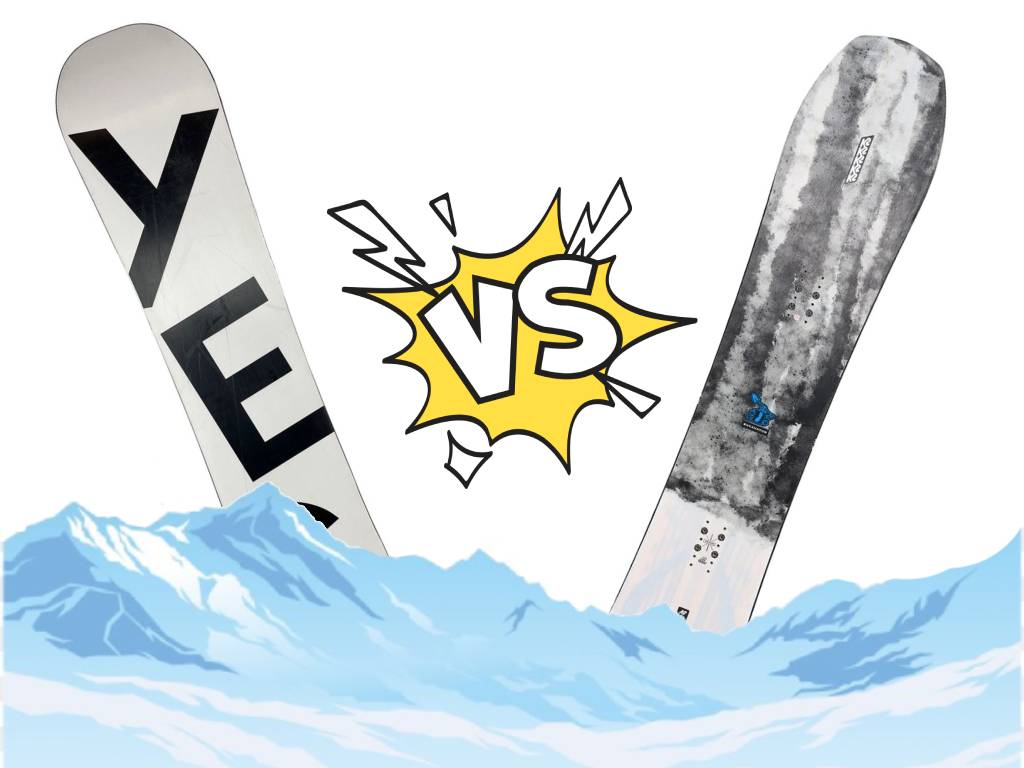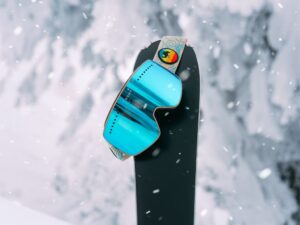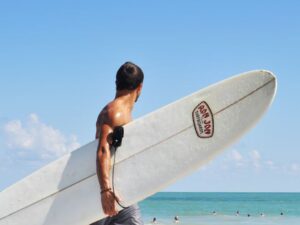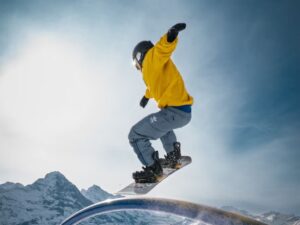Before you strap on your boots and grab your board, let’s talk about an important decision you’ll need to make: twin vs. directional snowboards.
These babies can make or break your shredding experience, so knowing the perfect equipment is important for an enjoyable snowboarding experience.
Understanding the differences and advantages of each type will help you determine which is best suited for your individual preferences and riding style.
As the name suggests, Twin snowboards are designed to be symmetrical, with identical shapes and flexing from nose to tail. In comparison, directional snowboards have a distinct front and back, with specific features optimized for riding in one direction.
In general, twin boards are ideal for freestylers who love tricks and flips, and directional boards are for those speed riders craving high-octane adventures. True twin boards offer symmetrical designs making them highly maneuverable. In comparison, directional boards are designed to provide stability at high speeds.
Here, I have highlighted some differences to make it easy for you.
| Features | Twin Snowboard | Directional Twin Snowboard |
| Shape | Symmetrical | Symmetrical |
| Flex Pattern | Symmetrical | Asymmetrical |
| Stance Setback | Centered or Minimal Setback | Slight Setback |
| Riding Style | Freestyle and All-Mountain | All-Mountain and Freeride |
| Performance in Powder | Moderate Float | Better Float |
| Carving Performance | Moderate | Good |
| Maneuverability | Excellent | Good |
| Switch Riding | Excellent | Good |
| Stability at High-Speed | Moderate | Good |
Twin Snowboards
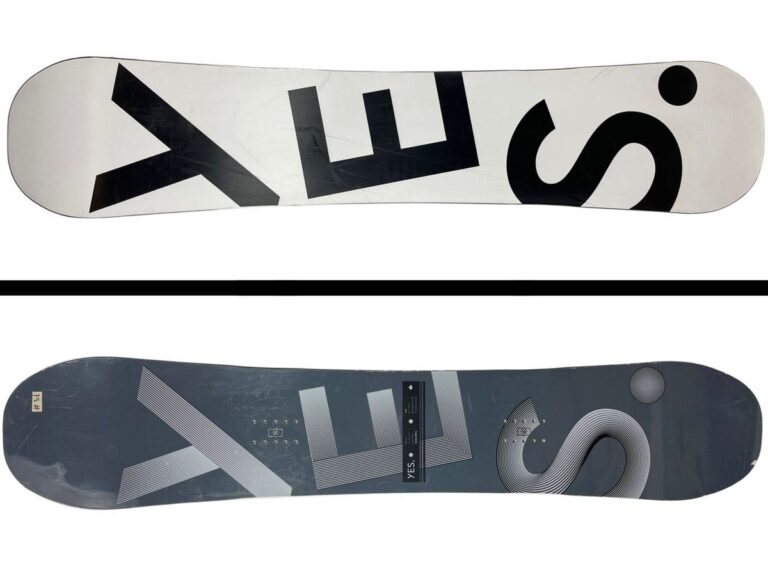
As you must know by now, they’re popular among freestyle riders who enjoy tricks, jumps, and riding switches (using a reversed stance). The symmetrical design of twin boards allows for equal performance in both regular and switch stances.
1. Advantages of Twin Snowboards
Symmetrical Shape and Flex: The symmetrical shape ensures that the nose and tail have the same length, width, and profile. This symmetry gives riders consistent feel and control, regardless of their riding direction.
Ability to Ride Switch: Twin snowboards are highly maneuverable in switch stances, making them ideal for park and freestyle riding. Riders can easily execute tricks, jumps, and spins; the board feels the same in regular and switch positions.
Versatility in Freestyle Terrain: Twin boards excel in park and freestyle environments, where riders can take advantage of their balanced performance and predictable feel. They are designed to handle jumps, rails, boxes, and other common features in terrain parks.
2. Disadvantages of Twin Snowboards
Limited Stability and Float in Deep Powder: Due to their symmetrical design, they may have reduced stability and float in deep powder compared to directional boards. The identical shape makes it more challenging to maintain control and stay on top of the snow in such conditions.
Potentially Reduced Performance in Aggressive Carving: Twin boards might offer a different level of edge hold and responsiveness during aggressive carving maneuvers than directional boards.
Directional Snowboards
Directional snowboards are designed with a specific front and back, catering to riders prioritizing stability, control, and performance in one direction. These boards are commonly preferred by freeride and all-mountain riders.
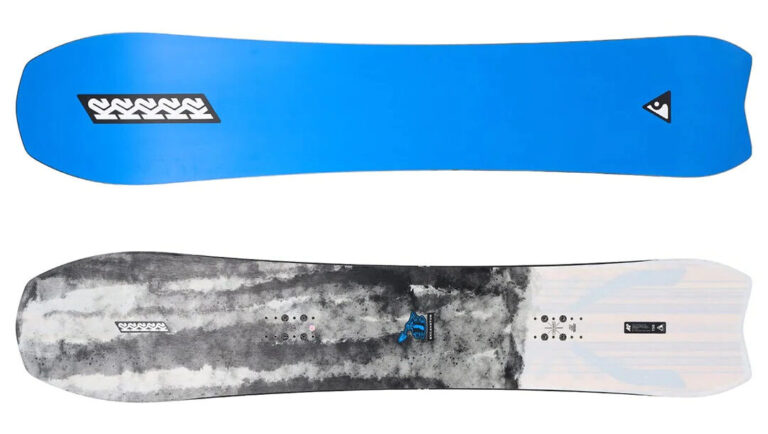
1. Advantages of Directional Snowboards
Asymmetrical Shape Optimized for One Direction: They have a distinct shape, featuring a longer, wider, or more setback nose than the tail. This design enhances performance in a specific direction, typically the nose-forward riding position.
Increased Stability and Control at High Speeds: It provides improved stability and control, especially when riding at high speeds or carving aggressively. The board’s design allows riders to maintain control and confidence in various snow conditions.
Enhanced Performance in Powder and Variable Conditions: Specialized features, such as a setback stance and a tapered tail, make these boards excel in powder snow and variable terrains. They offer better floatation and improved maneuverability in challenging conditions.
2. Disadvantages of Directional Snowboards
Challenging to Ride Switch: Riding a switch on a directional board can be more difficult than on a twin board. The tail is not designed to perform as well as the nose, making it less responsive when riding in a reversed stance.
Less Maneuverability in Freestyle Terrain: They’re generally less maneuverable in freestyle environments, such as terrain parks. Their specialized design prioritizes stability and performance in specific directions, which can limit their agility and ease of executing tricks and spins.
How to make the ideal choice b/w twin and directional?
Choosing between a twin and a directional snowboard depends on various factors, including your riding style, skill level, and terrain preferences. Here are some considerations to help you make the best decision:
1. Riding Style and Preferences
This is essentially the most important factor.
A twin snowboard is better if you primarily enjoy freestyle riding, tricks, and riding switch. On the other hand, if you prefer high-speed carving, exploring off-piste terrain, and riding in one direction, a directional board might be more suitable.
While riding a switch on a directional snowboard is possible, it can be more challenging compared to a twin snowboard. Directional boards are designed with a specific front and back, prioritizing performance in one direction. Hence the tail is generally less responsive when riding a switch.
2. Skill Level
As I mentioned earlier, it’s gonna be hard to learn the directional one in the beginning. Twin snowboards are often favored by beginners due to their forgiving nature and versatility.
They provide a balanced feel and are more forgiving regarding small mistakes. With their stability and control, directional boards are often preferred by intermediate to advanced riders who want to push their limits.
3. Terrain Preferences
Consider the type of terrain you plan to ride most frequently. You can go with the twin boards if you spend much time in terrain parks or enjoy freestyle tricks.
However, a directional board will offer the performance you need if you prefer riding groomed runs, exploring the backcountry, or seeking powder stashes. Directional twins are also suitable for snowboarding along the East Coast.
4. Current Gear
I always felt weird saying “quiver.” As if a bunch of snowboards are the same as arrows.
If you already have a board that’s quite close to the properties of either, you can go with the other one. Some riders also prefer having only a single board (beginners). In that case, you can choose a board with only a slight difference between true and directional twins.
5. Hybrid or Asymmetrical Snowboard
As snowboard technology evolves, hybrid and asymmetrical designs have emerged, blending features from twin and directional boards.
These boards aim to provide the best of both worlds, offering versatility, stability, and enhanced performance in various conditions. Explore these options if you want a balance between twin and directional characteristics.
Expert QnA
Q. Are twin snowboards only suitable for freestyle riding?
While twin snowboards are popular among freestyle riders, they can be versatile and suitable for various riding styles. Generally speaking, they can also handle all-mountain riding. Twin boards offer a balanced feel and can ride the switch comfortably.
Q. Do directional snowboards perform well in the park?
Directional snowboards are not typically optimized for freestyle terrain like terrain parks. Their design prioritizes stability, control, and performance in one direction, making them more suitable for all-mountain, carving, and powder riding.
Q. Which type of snowboard is better for beginners?
Generally speaking, twin snowboards are recommended for beginners due to their forgiving nature and versatility. Their symmetrical shape and flex provide a balanced feel and make it easier to recover from small mistakes.
Q. Can I use a directional snowboard for powder riding?
Directional snowboards are often preferred for powder riding due to their specialized features, such as a setback stance and a tapered tail. These design elements provide better floatation and maneuverability in deep snow.
Q. What should I prioritize when choosing a snowboard: shape or flex?
Both shape and flex are important considerations when choosing a snowboard. The shape determines the characteristics and performance of the board in terms of stability, control, and maneuverability. Flex affects how the board responds to different terrain and riding styles.

